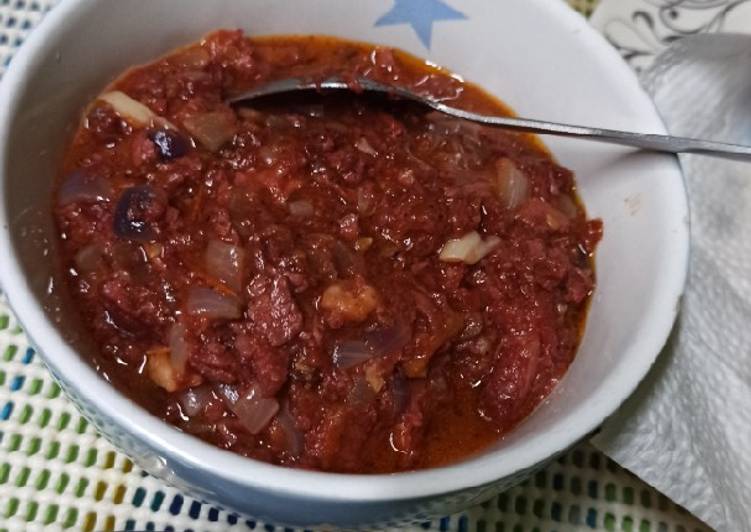Ginisang Corned Beef | My Style | Pinoy Style. The domain name my.style is for sale. This video will show you how to cook ginisang corned beef with potato. This is a simple Filipino dish that can be eaten with bread or rice.
 Wondering what to do with your canned corned beef…tired of the usual sauteed corned beef for breakfast?
Pour your Ginisang Corned Beef onto your serving bowl and serve.
BEST WITH: Fresh Steamed Rice, Toasted & Buttered Slices of Bread or as a filling in your I usually use leftover Ginisang Corned Beef the day after when it is still cold from the fridge as a filling for my Toasted/Grilled Sandwich or Jaffles.
You can cook Ginisang Corned Beef | My Style | Pinoy Style using 8 ingredients and 3 steps. Here is how you cook it.
Wondering what to do with your canned corned beef…tired of the usual sauteed corned beef for breakfast?
Pour your Ginisang Corned Beef onto your serving bowl and serve.
BEST WITH: Fresh Steamed Rice, Toasted & Buttered Slices of Bread or as a filling in your I usually use leftover Ginisang Corned Beef the day after when it is still cold from the fridge as a filling for my Toasted/Grilled Sandwich or Jaffles.
You can cook Ginisang Corned Beef | My Style | Pinoy Style using 8 ingredients and 3 steps. Here is how you cook it.
Ingredients of Ginisang Corned Beef | My Style | Pinoy Style
- You need of Canned Corned beef.
- You need of Chopped tomatoes (4pcs).
- Prepare of Minced garlic (2 clove).
- You need of Chopped red onion.
- Prepare of Magic Sarap (salt replacement).
- It's of Pepper.
- Prepare 1/4 cup of water.
- It's of Cooking oil.
Filipino Style Recipe: Ginisang upo recipe is another simple filipino dish. Ginisang Munggo or Monggo are sauteed mung beans. This recipe also makes use of pork and shrimp for additional flavor. The most famous Mung bean dish is the "Ginisang Munggo" (Sauteed Mung Bean).
Ginisang Corned Beef | My Style | Pinoy Style instructions
- In a medium heated pan with cooking oil, sauté tomatoes..
-
2. Add onion and garlic. Pour 1/4 cup of water. Wait until it is juiced..

-
Put corned beef, add Magic Sarap and pepper to taste. Wait until it boils and well blended then it's ready to be served..

This dish makes use of Mung beans as the main ingredient complimented by different flavors. Ginisang Munggo at Chicharon is a delicious mung bean stew flavored with pork cracklings. Adding a little soy sauce to mixture gives it just the right taste. Or would you rather have "GINISANG MANOK"? I grew up eating green beans (we call it baguio beans in Philippines) on a regular basis because it was one of the cheapest and available vegetables all year round in my native country.